 Loading...
Loading...

SMAD2
 Loading...
Loading...Anti-SMAD2 Products
-
- Derivation: Mouse
- Species Reactivity: Human
- Type: Mouse IgG1
- Application: WB, ELISA, FC, ICC, IF, IHC
-
- Species Reactivity: Human
- Application: IHC-P, WB
-
- Species Reactivity: Human
- Type: Mouse IgG
- Application: WB, ICC
-
- Species Reactivity: Human
- Type: Rabbit IgG
- Application: ELISA, WB
-
- Species Reactivity: Human
- Type: Rabbit IgG
- Application: ELISA, IF
- Mouse Anti-SMAD2 Recombinant Antibody (clone 4D3) (VS3-QX1018)
-
- Derivation: Mouse
- Species Reactivity: Human, Mouse, Rat
- Type: Mouse IgG1
- Application: WB, IP, IF, IHC
-
- Derivation: Mouse
- Species Reactivity: Human
- Type: Mouse IgG1
- Application: WB, ICC
- Mouse Anti-SMAD2 Recombinant Antibody (clone 5G7) (VS3-QX1020)
-
- Derivation: Mouse
- Species Reactivity: Human
- Type: Mouse IgG1
- Application: WB, IHC, ICC, FC, ELISA
- Recombinant Mouse Anti-SMAD2 Monoclonal Antibody (C9-B0) (MRO-1402-CN)
-
- Species Reactivity: Human, Mouse, Rat
- Type: Mouse IgG1
- Application: WB, IHC, IF
-
- Species Reactivity: Human, Rat
- Type: Rabbit IgG
- Application: WB, IF, IHC, IP, FC
- Rabbit Anti-SMAD2 Polyclonal Antibody (MRO-2191-CN) (MRO-2191-CN)
-
- Species Reactivity: Human, Mouse, Rat
- Type: Rabbit IgG
- Application: IF, IHC
-
- Species Reactivity: Human, Mouse, Rat
- Type: Rabbit IgG
- Application: WB, FC
-
- Species Reactivity: Human, Mouse, Rat
- Type: Rabbit IgG
- Application: WB, IHC, IP
-
- Derivation: Rabbit
- Species Reactivity: Human, Rat
- Type: Rabbit IgG
- Application: WB, ICC, IHC, IP, FC
-
- Species Reactivity: Human, Mouse, Rat, Hamster
- Type: Rabbit IgG
- Application: WB
-
- Type: Rabbit IgG
- Application: WB, FC
- Rabbit Anti-SMAD2 Recombinant Antibody (VS3-FY2873) (VS3-FY2873)
-
- Species Reactivity: Human, Rat, Hamster
- Type: Rabbit IgG
- Application: WB, IHC, ICC, IP
- AbPlus™ Anti-SMAD2 Magnetic Beads (CBACN-511) (VS-0424-XY238)
-
- Target: SMAD2
- Target Species: Human, Rat
- Application: IP, Protein Purification
- Mouse Anti-NHP SMAD2 Recombinant Antibody (VS-1024-XY484) (VS-1024-XY484)
-
- Species Reactivity: Human, Mouse, Non-human primate, Rat
- Type: Mouse IgG1
- Application: WB
- Rabbit Anti-SMAD2 Recombinant Antibody (clone AFY0008) (MOR-0037-FY)
-
- Species Reactivity: Human
- Type: Rabbit IgG
- Application: ICC, IHC-P, WB, Inhib
-
- Derivation: Phage display library screening
- Species Reactivity: Human
- Type: IgG
- Application: FC, ICC, IHC-P, IP, WB
-
- Species Reactivity: Human
- Type: IgG
- Application: WB, IF, ICC
-
- Species Reactivity: Human
- Type: IgG
- Application: WB, IF, ICC, FC, ChIP
-
- Species Reactivity: Human
- Type: IgG
- Application: WB, IF, ICC, FC, ChIP, ELISA
- Human Anti-SMAD2 scFv-Fc Chimera (VS-0125-FY71) (VS-0125-FY71)
-
- Species Reactivity: Human
- Type: Human IgG1, scFv-Fc
- Application: ADCC
-
- Species Reactivity: Human, Mouse, Rat
- Type: Rabbit IgG
- Application: WB, ICC, IF, IHC-P, IP, FC
- Mouse Anti-SMAD2 Monoclonal Antibody (VS7-0425-WR876) (VS7-0425-WR876)
-
- Species Reactivity: Human
- Type: Mouse IgG
- Application: WB, IHC-P, IF, ICC, FC, ELISA
- Anti-SMAD2 Immunohistochemistry Kit (VS-0325-XY2105)
-
- Species Reactivity: Human, Mouse, Rat
- Target: SMAD2
- Application: IHC
- Human Anti-SMAD2 Recombinant Antibody (clone 2506W1369) (VS-0625-FY1474)
-
- Species Reactivity: Human
- Type: Human IgG1
- Application: ELISA, Spiked IP, IF
- Anti-Human SMAD2 Immunohistochemistry Kit (VS-0525-XY6716)
-
- Species Reactivity: Human
- Target: SMAD2
- Application: IHC
Can't find the products you're looking for? Try to filter in the left sidebar.Filter By Tag
Our customer service representatives are available 24 hours a day, from Monday to Sunday. Contact Us
For Research Use Only. Not For Clinical Use.
Background
Cancer-related genes, Human disease related genes, Plasma proteins, Transcription factors
Intracellular, Membrane (different isoforms)
Low cell type specificity
Low immune cell specificity
Low cell line specificity
Monomer; in the absence of TGF-beta (PubMed:9670020). Heterodimer; in the presence of TGF-beta (PubMed:9670020). Forms a heterodimer with co-SMAD, SMAD4, in the nucleus to form the transactivation complex SMAD2/SMAD4 (PubMed:9670020, PubMed:24324267, PubMed:15350224). Found in a complex with SMAD3 and TRIM33 upon addition of TGF-beta (PubMed:16751102). Identified in a complex that contains at least ZNF451, SMAD2, SMAD3 and SMAD4 (PubMed:24324267). Interacts (via the MH2 domain) with ZFYVE9; may form trimers with the SMAD4 co-SMAD (PubMed:10615055). Interacts with TAZ/WWRT1 (PubMed:18568018). Interacts with FOXH1 (PubMed:9702198). Interacts with SNW1 (PubMed:11278756). Interacts with CREB-binding protein (CBP) and EP300 (PubMed:16862174). Interacts with SNON (PubMed:11389444). Interacts with ALK4/ACVR1B (PubMed:9892009, PubMed:10615055). Interacts with SKOR1 (PubMed:17292623). Interacts with SKOR2 (PubMed:16200078). Interacts with PRDM16 (PubMed:19049980). Interacts (via MH2 domain) with LEMD3 (PubMed:15601644, PubMed:15647271). Interacts with RBPMS (PubMed:17099224). Interacts with WWP1. Interacts (dephosphorylated form, via the MH1 and MH2 domains) with RANBP3 (via its C-terminal R domain); the interaction results in the export of dephosphorylated SMAD3 out of the nucleus and termination of the TGF-beta signaling (PubMed:19289081). Interacts with PDPK1 (via PH domain) (PubMed:17327236). Interacts with DAB2; the interactions are enhanced upon TGF-beta stimulation (PubMed:11387212). Interacts with USP15 (PubMed:21947082). Interacts with PPP5C (PubMed:22781750). Interacts with LDLRAD4 (via the SMAD interaction motif) (PubMed:24627487). Interacts (via MH2 domain) with PMEPA1 (via the SMAD interaction motif) (PubMed:20129061). Interacts with ZFHX3 (PubMed:25105025). Interacts with ZNF451 (PubMed:24324267). Interacts with SMURF2 when phosphorylated on Ser-465/467 (PubMed:11389444). Interacts with PPM1A (PubMed:16751101). Interacts with TGF-beta (PubMed:8980228). Interacts with TGFBR1 (PubMed:9865696). Interacts with TGIF (PubMed:10835638). Interacts with SMAD3 and TRIM33 (PubMed:16751102). Interacts with ZNF580 (PubMed:21599657). Interacts with NEDD4L in response to TGF-beta (By similarity). Interacts with HGS (By similarity). Interacts with AIP1 (By similarity). Interacts with WWP1 (By similarity). Interacts with PML (By similarity). Interacts weakly with ZNF8 (By similarity). Interacts (when phosphorylated) with RNF111; RNF111 acts as an enhancer of the transcriptional responses by mediating ubiquitination and degradation of SMAD2 inhibitors (By similarity). Interacts with YAP1 (when phosphorylated at 'Ser-127') (By similarity).
DNA-binding


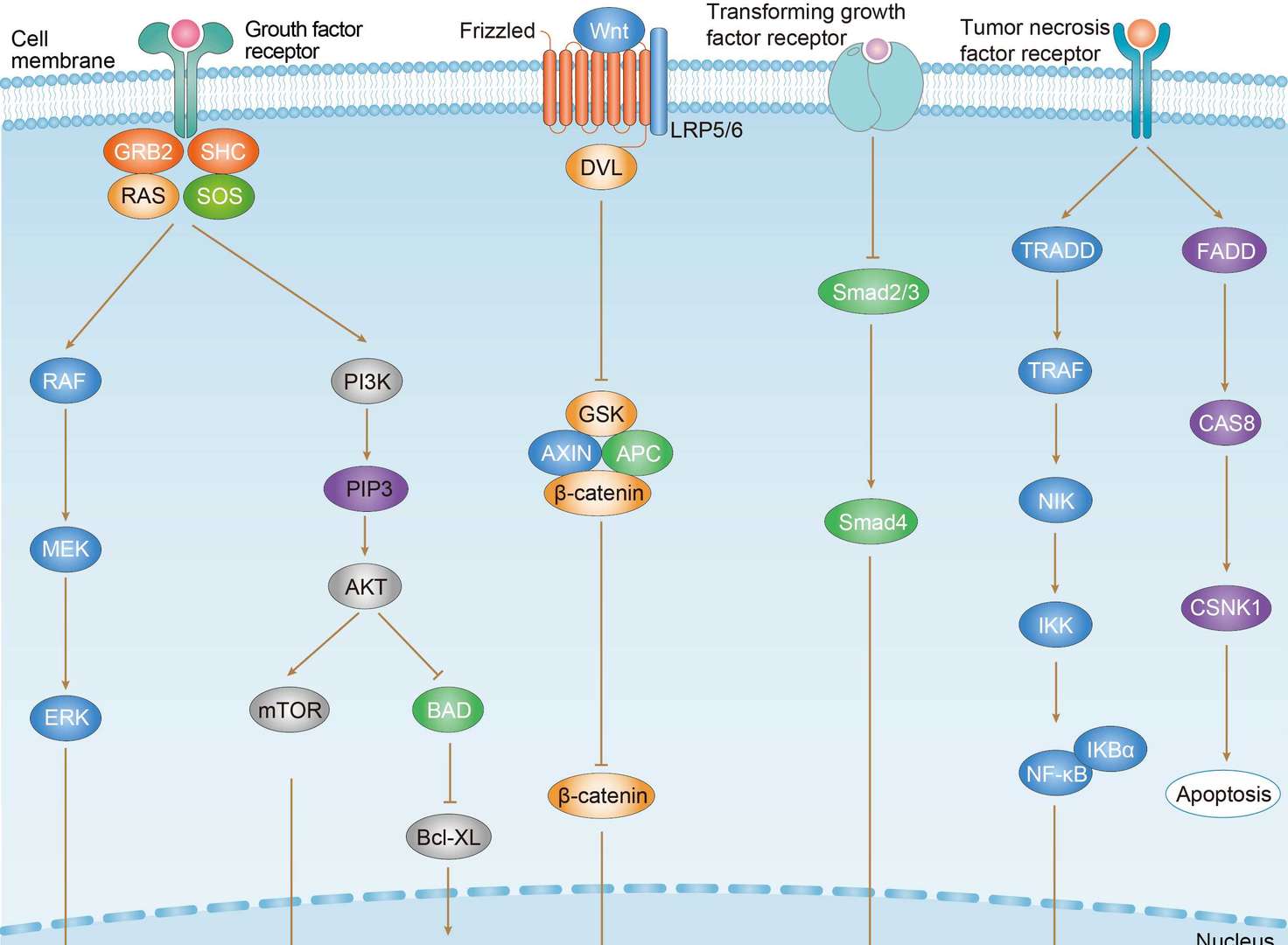 Colorectal Cancer
Colorectal Cancer
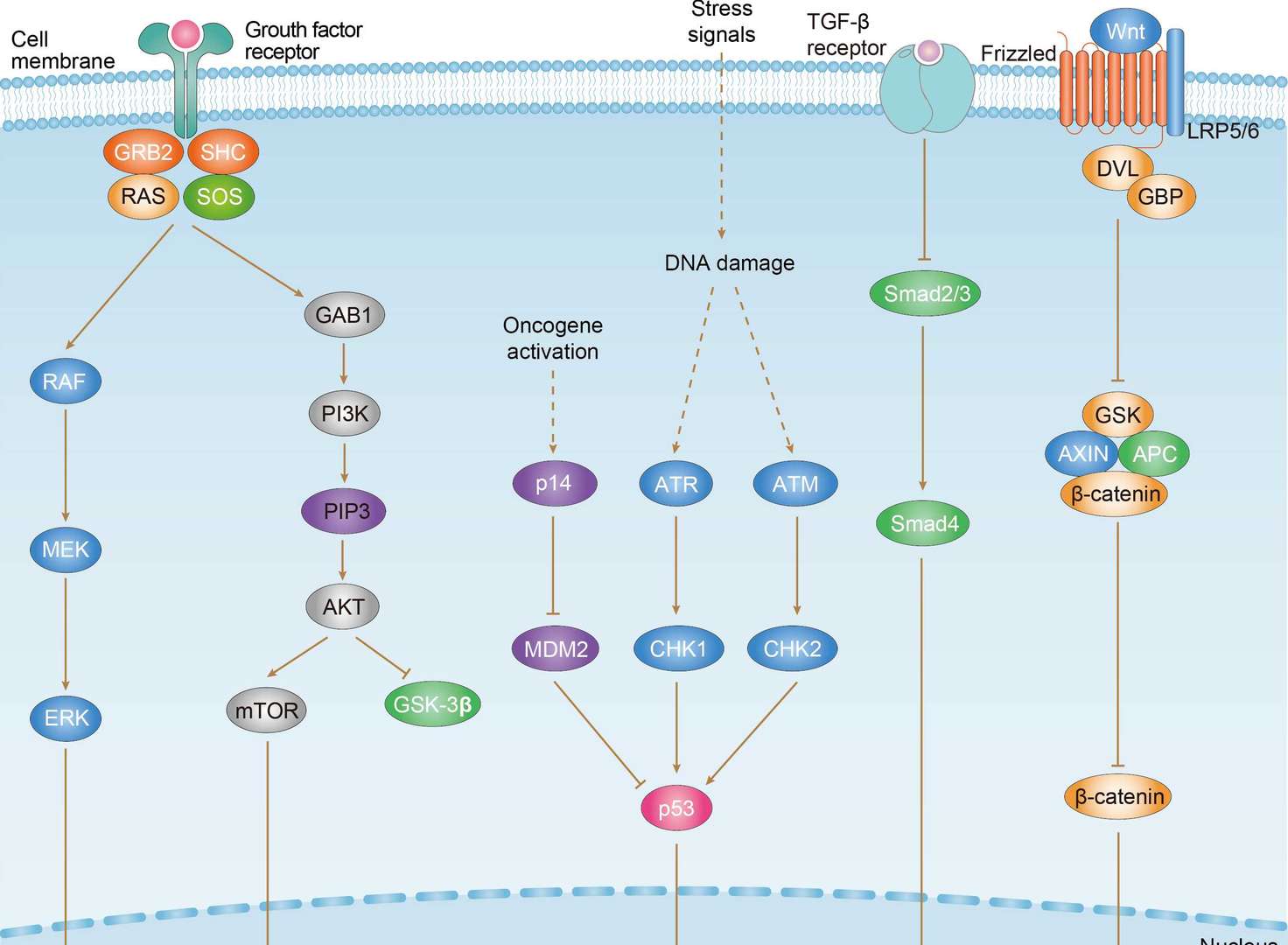 Gastric Cancer
Gastric Cancer
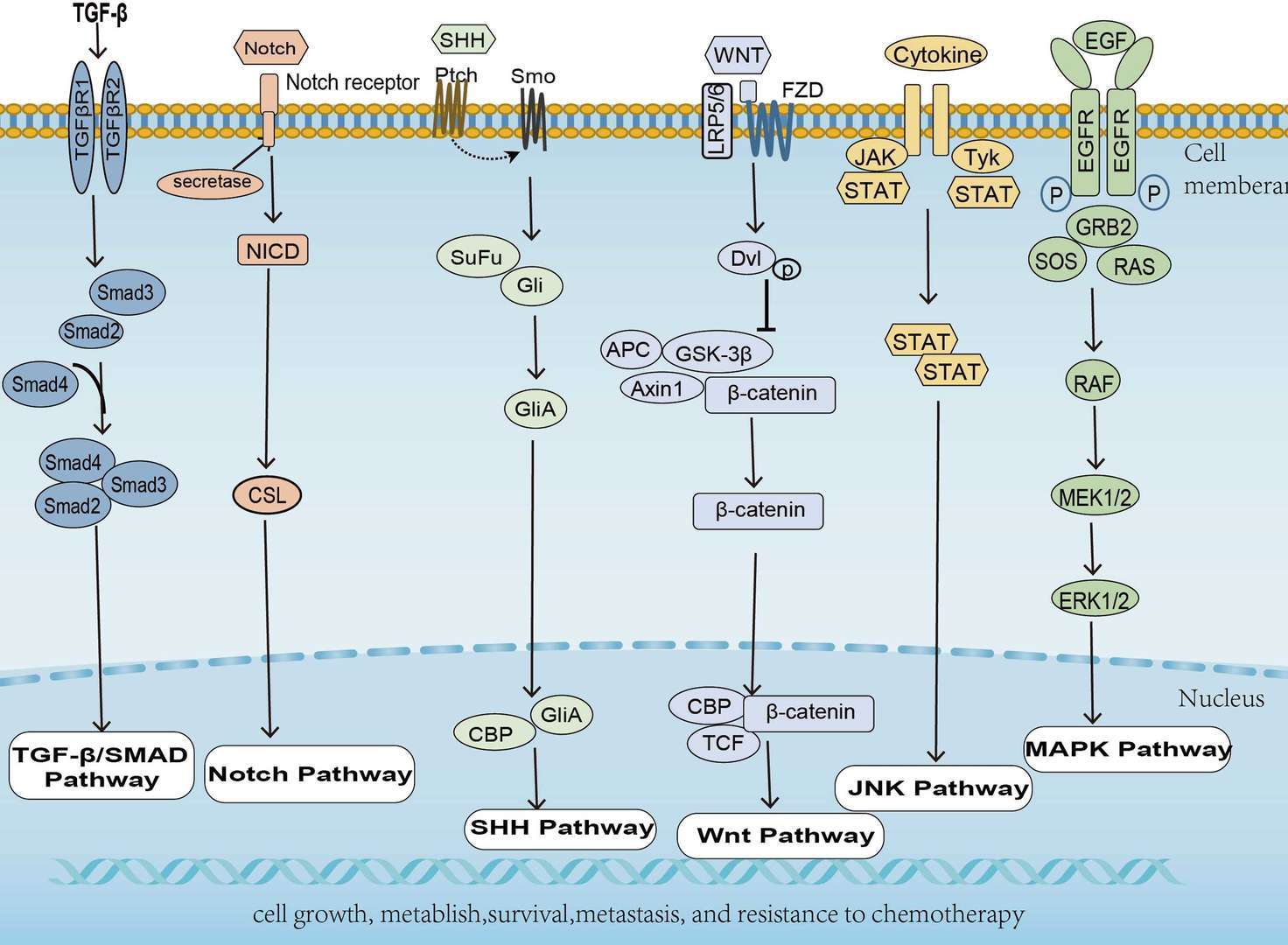 Pancreatic Cancer
Pancreatic Cancer
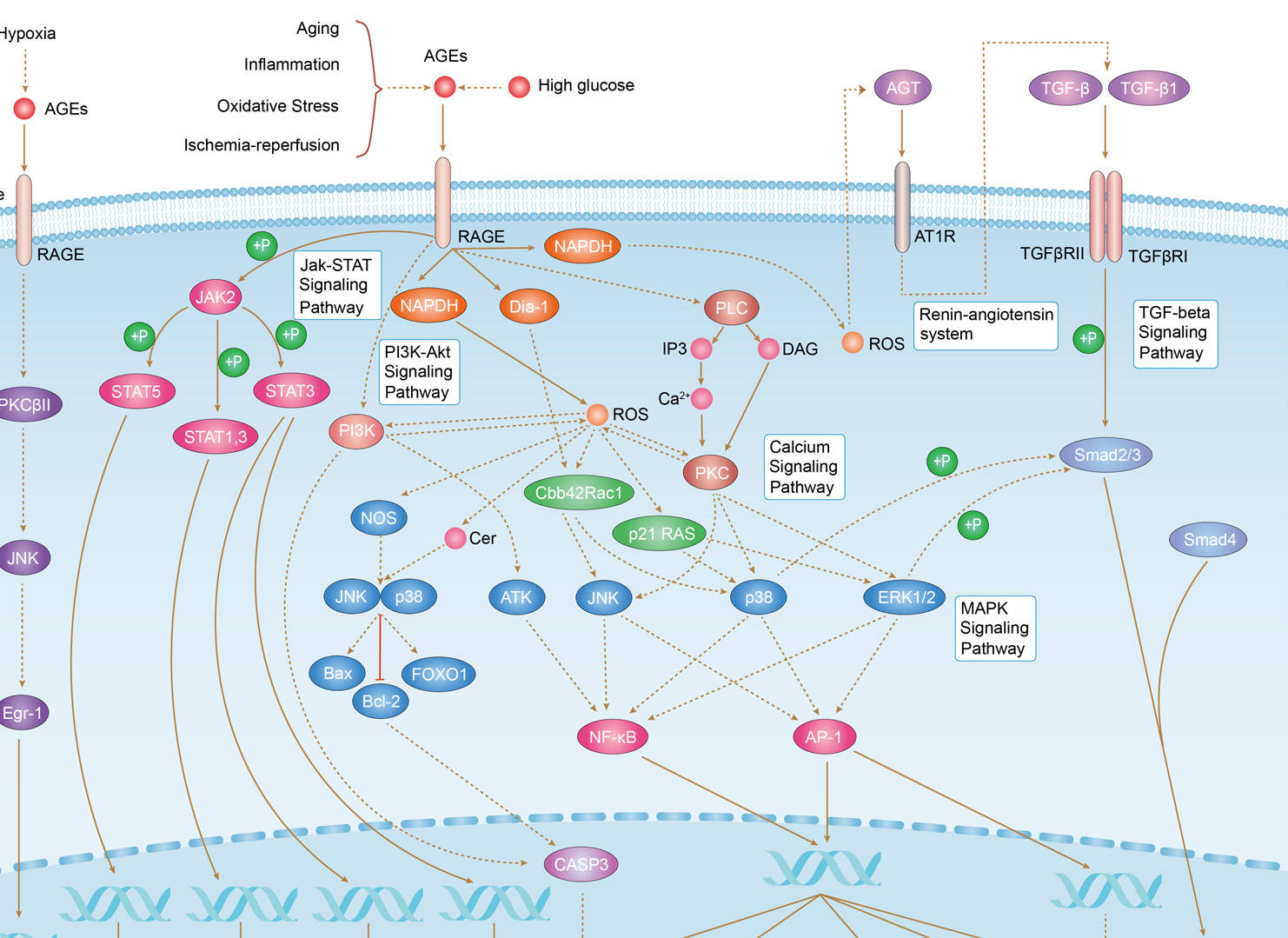 AGE-RAGE Signaling Pathway in Diabetic Complications
AGE-RAGE Signaling Pathway in Diabetic Complications
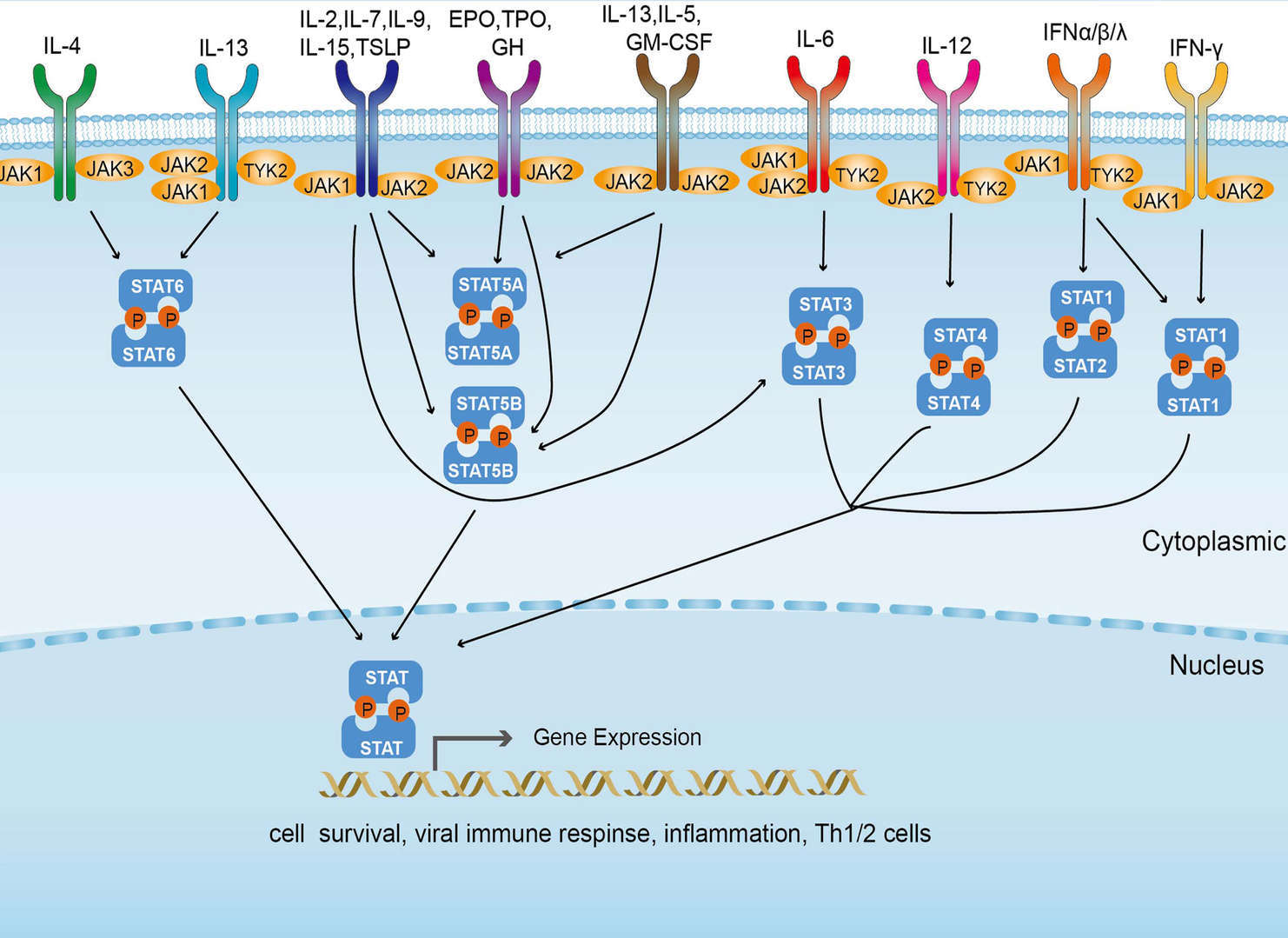 JAK-STAT Signaling Pathway
JAK-STAT Signaling Pathway
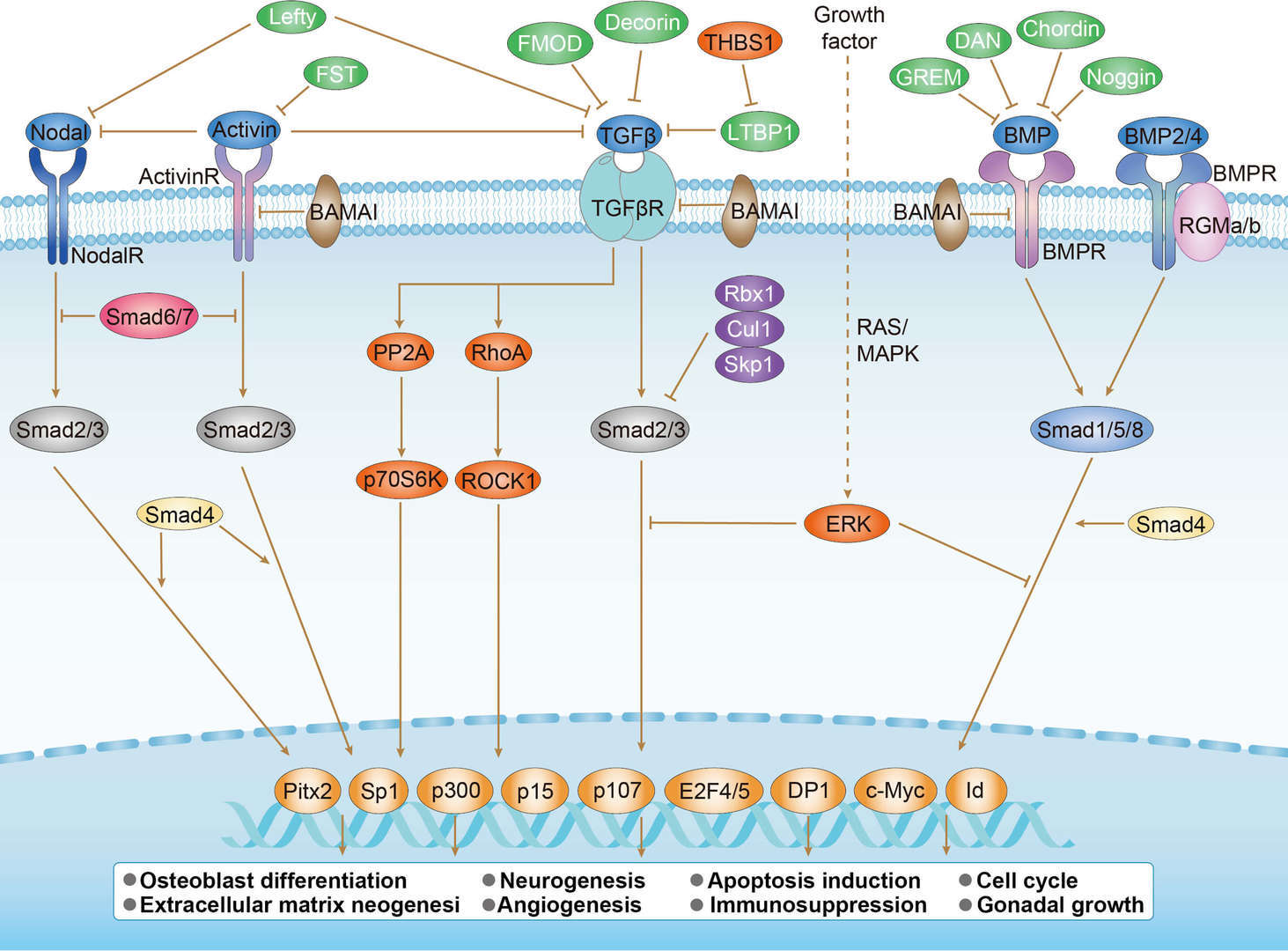 TGF-β Signaling Pathway
TGF-β Signaling Pathway

